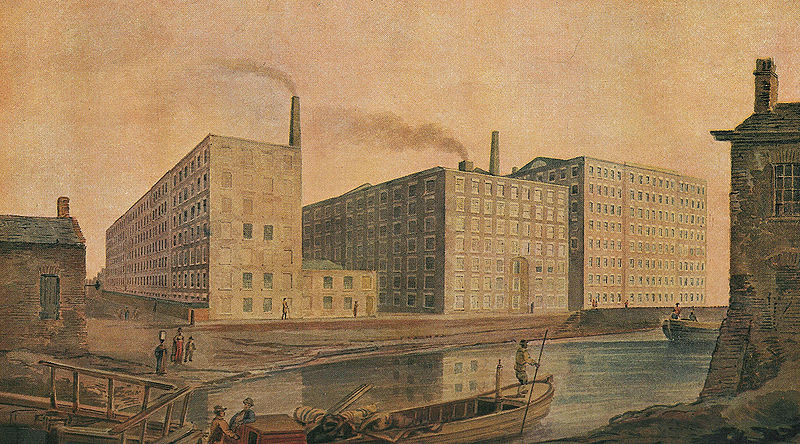Environmental policymakers rely on cap-and-trade schemes, also known as marketable permit systems, to regulate pollution. These innovative schemes trace their origins back to an academic theory that proposed a market for pollution. Why did the idea of a ‘market for pollution’ travel from the academic seminar room to the halls of legislatures? And how did it travel so well? Recent MSc graduate Madeleine Dibble argues that the idea’s flexibility, manipulability and congruence with prevailing paradigms enabled its journey.
The economist John Dales first conceived of a market for pollution in the late 1960s. By the end of the 1970s, the U.S.’s Environmental Protection Agency implemented a version through the Clean Air Act. By the late 1990s, several other markets for pollution appeared, most notably at the international level through a ‘cap-and-trade’ scheme introduced by the Kyoto Protocol. Today, the EU, UK, regions of the US and China each have their own emissions trading schemes.
How did the market for pollution move from being an economic theory to an international policy in under half a century? Why did the idea travel from academia to policy so well? These questions motivated my research, which examines the journey of a market for pollution through an ideas-performativity framework.
The idea and its travelling framework
A market for pollution is an economic instrument for reducing pollution levels cost-effectively. Policymakers distribute permits, which specify the level of pollution that market agents can emit. Agents may choose to reduce their pollution output and trade the surplus to other agents who want to pollute over their permit level. By controlling the quantity of permits, policymakers ‘cap’ the market’s total pollution output. The term cap-and-trade became shorthand for this type of policy scheme.
My research applied an ideas-performativity framework to analyse how the market for pollution travelled from an idea to a policy. This framework recognises that economic ideas and their policy applications can alter behaviours and perceptions of economic actors, as well as their institutional and environmental surroundings. Performativity refers to the changes imposed by an economic idea on how an economy operates.
Mary Morgan, a leading scholar in the field and professor in the department of economic history at LSE, has suggested the following criteria for why some ideas travel better than others:
1. There is demand for the idea and it meets little resistance.
2. The idea possesses ‘character’, which might spark interest in or demand for the idea.
3. The idea has good ‘companions’, which might include strong empirical evidence, financial resources, contingent historical events, or an association with authoritative institutions.
These criteria depend on interactions between the following elements: the idea, competing and complementary ideas, actors and institutions that carried or obstructed the idea, and broader socio-political, economic and environmental factors. As the ‘market for pollution’ idea travelled, it navigated these interactions, remaining intact while gaining new users and taking on new functions.
Why did the market for pollution travel well?
Three core characteristics of the market for pollution generated demand for its adoption, endowed it with strong ‘character’ and motivated agents to act as ‘good companions’. These were the idea’s flexibility, manipulability and congruence with prevailing economic concepts and policy paradigms.
The market for pollution was flexible. The core concept could be applied in a variety of forms to suit contextual circumstances. Policymakers implemented pragmatic versions of the idea’s theoretical model. For example, policymakers rarely sold permits as a first step. Instead, they distributed permits for free and allowed market forces to act thereafter. The idea could bend enough to be feasible given political constraints yet still be recognised as a market for pollution.
Secondly, the idea granted manipulability over pollution levels to key companions. By controlling the quantity of permits available, policymakers directly control the course of an industry’s pollution levels. Taxing pollution, a competing idea, did not grant the same level of control to policymakers. Industry resistance to a tax rise was greater than resistance towards a restriction in permit availability.
Thirdly, prevailing policy paradigms aided the idea’s travels. Orthodox economic thought favoured market-based solutions with clear property rights over command-and-control alternatives. The rise of the neo-liberal consensus in the 1970s and 1980s generated further support. Markets for pollution were promoted as pollution-curbing tools that complement economic growth, a paradigmatic policy aim.
The market for pollution competed with ecological-economic ideas, which were ultimately relegated to a subordinate position within both American and European institutions. These ideas broke away from neoclassical economic frameworks, reframing the economic system in terms of human-nature interactions. This heterodox approach restricted the travel range of ecological-economic ideas. The market for pollution did not suffer this fate thanks to its congruence with neoclassical economics.
The Positive Feedback Loop of Travelling Well
These travel-promoting interactions motivated early adopters to implement the market for pollution as policy. Once implemented, the employment of the instrument in new contexts became more likely. Historians of environmental policy have highlighted how early adopters demonstrated the effectiveness of markets for pollution and improved future-adopters’ understanding of the policy instrument.
Earlier implementations of the idea altered how actors perceived environmental policies, making a market-based approach more appealing. Agents who interacted with the market for pollution were more likely to consider environmental problems to be solvable by individualistic, price-based incentives. Moreover, placing a monetary price on pollution strengthened conceptions of the environment as a commodity that can be bought and sold as property. In this way, the policy enhanced the policy environment within which the idea travelled, feeding back and generating further demand for markets for pollution.
Conclusion
The market for pollution travelled well: it was flexible, manipulable, and congruent with policy paradigms and mainstream economic thought. These characteristics promoted the idea’s travel by generating demand for the idea’s adoption, endowing the idea with strong ‘character’ and motivating agents to act as ‘good companions’. A positive feedback loop reinforced these travel-promoting factors after its implementation by early-adopters.



